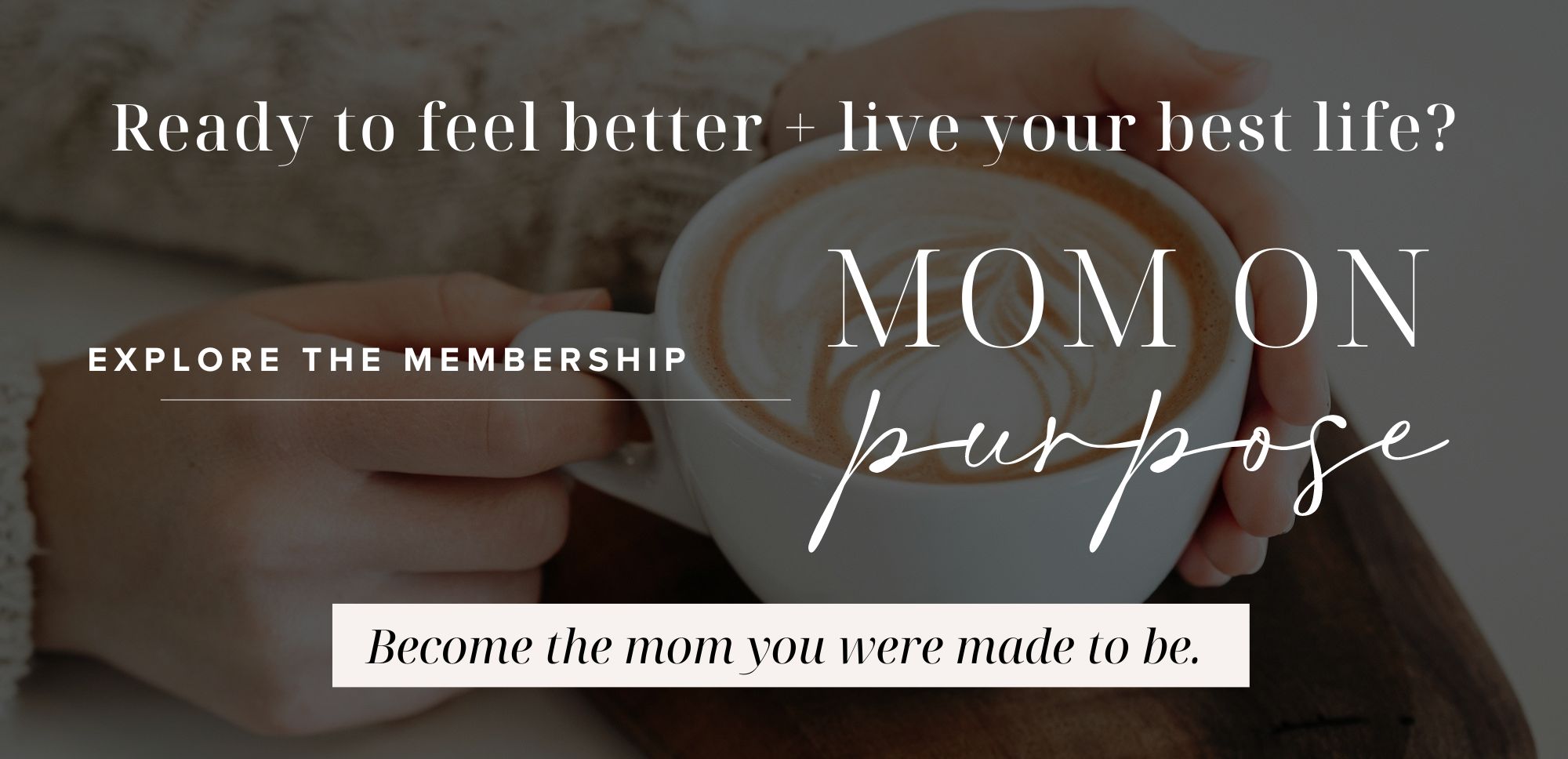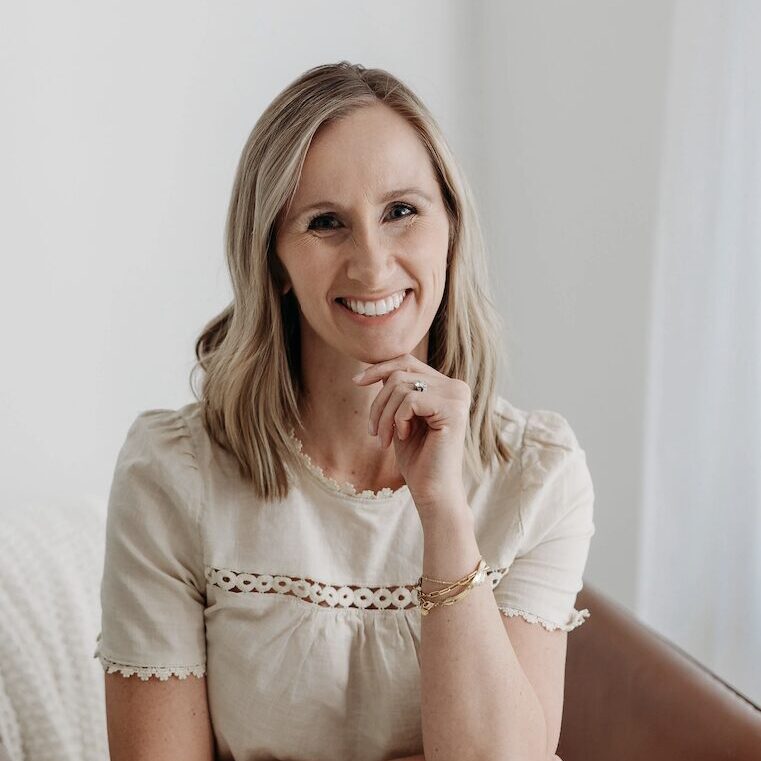If you experience anxiety, it can wreck how you show up in your life and as a mom. Anxiety (the type I’m referring to here) is feeling fear plus an uncertainty about the future. It’s this combination of fear with the unknown that the brain runs wild with.
For example, if your child doesn’t get accepted into a specific school, your brain on default might start to think about the future unknowns with respect to their education, causing you to feel anxious.
The good news is that mindfulness practices can help you regulate your anxiety so that it isn’t negatively impacting how you show up as a mom.
* Please note: In this post, I’m referring to anxiety as the feeling creating by our thinking. I’m not referring to a chemical imbalance. If you think you need professional help, please seek out a medical professional who can help you.
Mindfulness Techniques For Anxiety In Motherhood
For a variety of reasons, I think anxiety is pervasive in motherhood. There is an enormous (an disproportionate) amount of pressure to be a “good mom” and “do a good job.” With the unlimited access to information today, this turns into endless opportunities to give the brain to run wild with fear about the future.
This is why today, more than ever, it’s important to have mindfulness practices that you can use to help you in your daily life.
Here’s a list of seven mindfulness practices that can benefit someone experiencing anxiety in motherhood.
1. Sit in 10 minutes of silence every day.
Sitting in silence for up to 10 minutes every day has the benefit of slowing down your nervous system and regulating your body to a state of calm.
If you’re used to feeling anxious, this exercise will be powerful as a habit to help you feel more grounded. Note that when you first start doing it, it’s uncomfortable because your body isn’t used to sitting still. Try it for at least 30 days before deciding if it’s right for you. By then, you’ll see some of the lasting benefits.
To learn how to practice 10 minutes of silence, click here for the Instagram post tutorial.
2. Look at what’s happening in your mind.
Anxiety is a feeling caused by your thinking. The solution is to look at what you’re thinking that’s creating anxious feelings. While some people have more anxiety-producing thoughts than others (depending on your past and upbringing), thought work to manage your mind can be an enormous help. Instead of feeling like you’re at the effect of your anxiety, you can manage your mind and feel much more in control of your mind and body.
When you manage your mind, it’s not that the anxiety is gone forever, but instead, that the anxiety isn’t so terrible. There’s no resistance or judgment of the anxiety when you choose how to think and feel about it on purpose.
The work of managing your mind around anxiety is what we do in Mom On Purpose Membership, my coaching program for moms.
3. Stop the fast forward thought error.
Anxiety is fear plus uncertainty about the unknown future. Anxiety feels important to the brain because it wants to be certain about what’s ahead in order to make sure you’re safe and well. One effective way to manage feeling anxious is to notice when you’re focused on the future in a way that’s based in fear.
For example, if you’re thinking about your kids not getting into a specific school because of their current grades and you’re feeling anxious, that would be a fast forward thought error. You’re fast-forwarding their current reality into the future with doom and gloom. Your brain on default will love doing this because it feels protective. If you watch it happening, though, you can see that it’s not the big deal your brain would like to think it is.
When you find yourself in a fast forward thought error, bring your attention back to today, and remind your brain that you’ll worry about any future problems when they arise and not a day sooner.
4. Go on sensory walks.
When you’re feeling anxious, it can seem all consuming in your mind and body. Getting outside into the world can be very grounding and help you get out of your head. One way to do this is through a sensory walk, where every 30 seconds or so you switch to focus on a different sense. What do you feel? What do you smell? What do you see? What do you feel? The idea is to be grounded in the space, in the present, out of your head.
This mindfulness practice has a way of allowing you to be with the anxiety instead of in resistance of it, which is necessary for you to ever solve it.
5. Befriend and welcome your anxiety.
When your nervous system is activated and you feel anxious, one of the best ways to cope is to welcome and allow the feeling. The natural reaction to anxiety is to resist it and want to make it go away. This will make the feeling compound, build up, and eventually, it’s what creates panic attacks (the resistance and compounding of emotions). The alternative to resisting anxiety is to allow the feeling to be there, welcoming it in your body, almost like a friend.
When you feel anxiety next, notice it. Talk to it. Describe it. It sounds like: “This is anxiety. I feel it in my chest. It’s fast and warm. I welcome it to be here. Today I’m going to do anxiety.”
When you’re kind and loving toward your anxiety, it will feel far less uncomfortable than resisting it.
6. Reduce stimulation and screens.
When anxiety creeps in, it can be tempting to want to escape the feeling by adding in a screen or two (queue scrolling). Yet, over-stimulation just makes anxiety worse. Instead, focus on eliminating screens when you’re feeling anxious. Be with your body and allow the feeling, ditch the screens, and stay present.
7. Answer your brain and coach yourself.
Because anxiety is created by the primitive brain feeling uncertain about the future, it can be incredibly powerful to answer your brain when it comes up with fear-based hypotheticals.
Fear based hypotheticals sound like this: “What if they don’t make the team? What if she’s not invited? What if he gets a diagnosis? What if we can’t move there?”
When your brain has a “what if” question about the future unknown, answer your brain. If they don’t make the team, then you’ll help them feel their feelings and decide what they want to do next.
The truth is that you can handle any challenge that’s presented to you today. Anxiety is a lie insofar as it will have you believing that you can’t solve challenges ahead. Remind your brain that you can and you will.
This is an art and a skill, and I’d be more than delighted to help you hone both! This is what I do with my clients inside the Mom On Purpose Membership.
CLICK HERE to learn more about Mom On Purpose Membership.
A Final Note
When you use mindfulness practices to help with anxiety in motherhood, the hold that anxiety has on you lessens. Instead of anxiety being the emotion you operate from, you’ll have awareness of what’s happening in your body and be able to manage it so that it’s not leading the decisions you make. And when you manage anxiety this way, it really isn’t so bad. It’s the resistance of anxiety that makes it so terrible.



